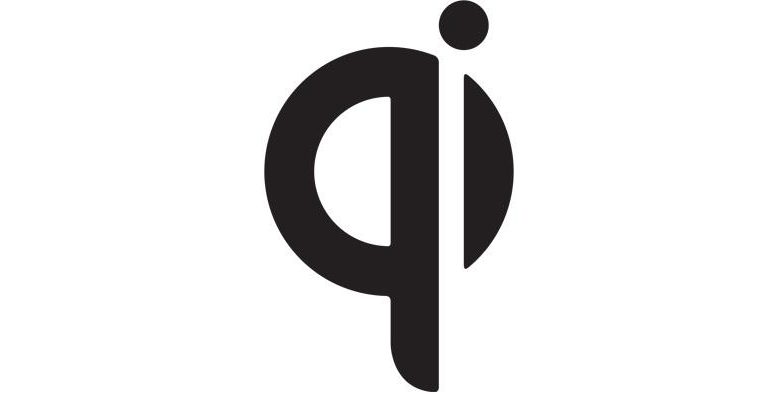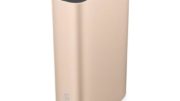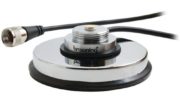Qi wireless charging has taken over the cellular world. It started out with higher-end Android phones, and with its adoption on iPhones in 2017, Qi has effectively won the war for wireless charging. Let’s back up a little bit and take a look at Qi’s history and why you may want to think about Qi in the future.
“Qi” (pronounced “chee”) is a Chinese word meaning power or life force. But that’s really not the point, I just thought I’d mention it so you wouldn’t get distracted thinking about it.
A little bit of history
Wireless charging has been with us for a hundred years. It was the great Nikola Tesla who first demonstrated the potential for wirelessly powering devices, but his goal was to eliminate the power grid altogether. Unfortunately, he discovered that the amount of power delivered decreases by the square of the distance (in other words, if you broadcast 36 volts, at just 6 inches away you will receive only 6 volts.) This means that if you were going to wirelessly power devices from several miles away, the charger would need to be putting out so much power that it would kill nearby livestock.
Tesla’s discoveries did prove useful, though, since all radio and television broadcasting takes place using wireless transmission of electricity, even though the electrical signal is very weak by the time it gets to you.
Wireless charging comes back in vogue, because it was actually possible
No one much thought about wireless charging again until the late 2000s when cell phone and accessory manufacturers started to look into the idea of inductive charging. Inductive charging is technically wireless charging, but the transmitter and receiver are so close that it’s possible to transfer enough power to charge something.
The first wireless chargers, shown at the 2010 Consumer Electronics Show, were large and clunky cases that connected to your phone, doubling its weight. No one much paid attention and the market moved on. However, at the same time, the Wireless Power Consortium was working hard at improving things. If wireless charging could be built into phones themselves, the size would drop and everyone would want it. At least that was the theory.
The Qi standard was actually published in 2009, but it took a while before phones started using it. The first Qi-enabled phone was the Nokia Lumia 920 in 2012, which was unfortunately unpopular. However, Qi started to migrate to high-end Androids not long after that, and by 2016, pretty much every “name-brand” top-end smartphone had a Qi charging coil built in. Finally, in 2017, Apple adopted the technology as well.
How does it work?
Qi uses the same idea as radio and television, the same idea that Tesla had 100 years ago: Put a lot of power through a wire and you can make it jump to another wire. A broadcasting coil inside the charging pad creates an electrical field, and a receiving coil inside the phone accepts it and sends it to the battery.

The more area there is, in other words the larger the coil, the more successful it will be. In order to keep things, safe, the amount of power is kept fairly low, and the electrical field is also designed not to interfere with cellular frequencies. Because, it would be bad if charging your phone made it so you couldn’t get calls.
Two types of Qi chargers
The standard Qi charger provides 5 watts of power transmitted wirelessly. This is enough to charge your phone at almost the same speed as a wired connection (which is about 7 watts.) This also provides the safest wireless charging. There is also a fast-charging standard, now supported by Samsung and Apple, which provides 7.5 watts of power, which actually charges your phone faster than the smaller cube chargers will. You need a charging pad that supports this new standard as well, so not every low-priced charging pad will work.
What’s the harm?
For the most part Qi charging is considered to be extremely safe. However, you are broadcasting electricity and so you should never put a Qi charging mat up to your head if you are charging the phone. A Qi-certified charging pad (you can use the term pad or mat interchangeably) will not broadcast unless there is a device ready to receive. This still doesn’t mean you should put one up to your head.
There is also some residual heat that comes off a device when it’s being charged. As the battery charges, some of the energy escapes as heat. This can mean that a fast-charging phone can get uncomfortably warm to the touch. There are supposed to be safeguards in place to make sure that the heat doesn’t get to dangerous levels.
If you use a thick, chunky case on your phone you might find that the charging is even slower. This is normal, so if you really treasure that super-protective case, wireless charging may not be for you.
Will wireless charging ever get as fast as wired charging?
The latest wireless charging pads are pretty fast. They are about as fast or faster than the small cube chargers that we all used to use. However, they’re not as fast as today’s 20W chargers. In order to get there you’d need to put a lot more power through them. That’s because there’s a lot of energy lost as it goes through that air gap. There’s some question as to whether or not that amount of energy would be really safe. So I’m not sure that’s going to happen.
If you want to know more about cellular products, give us a call! Our Signal Connect division can help you with new phones for home or business. We also have a wide variety of products to make your calling experience better. Call us (with a well-charged phone, of course) at 888-233-7563 or fill out the form below.





